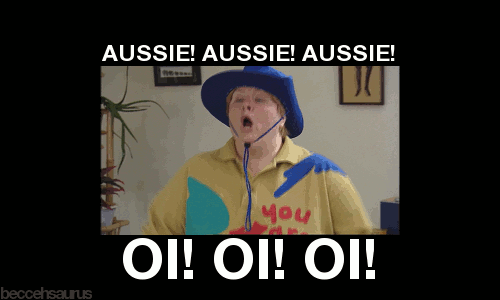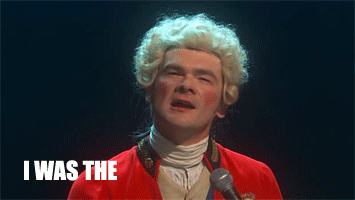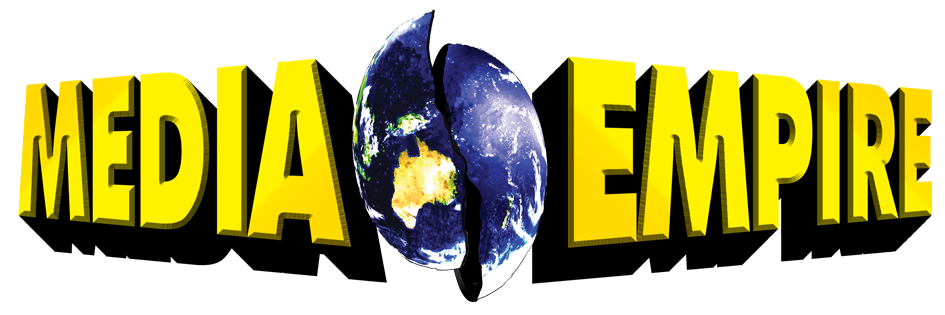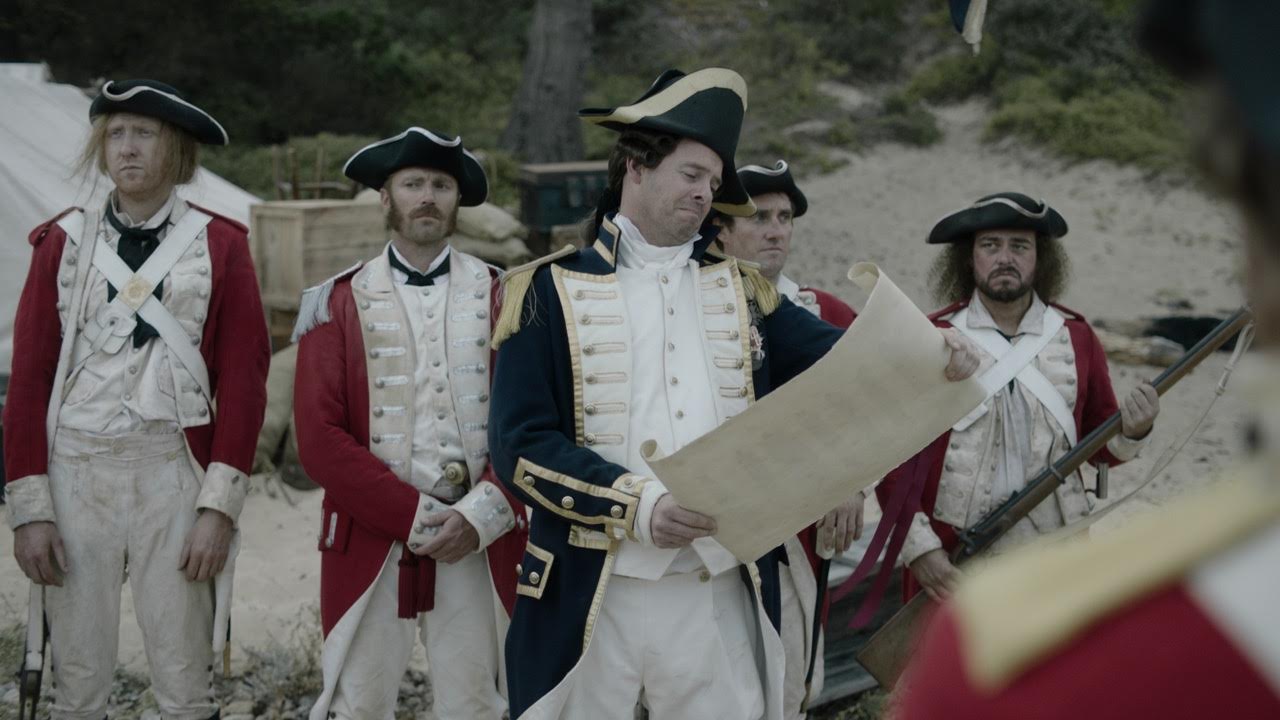Does January 26 actually mark the arrival of the British on our shores – or the French?
(Originally published 25 January 2019 on The Project website.)
Here at The Project, we absolutely love Australia. We’re true blue fair dinkum bonza cobbers, jolly jumbuck rustling billabong swagpeople, by jingo.

I hope that establishes our patriotic credentials. So as Aussie patriots, it saddens us to see that we’re here again, on the eve of January 26, marking our national holiday by arguing.
On one side are the defenders of ‘tradition’, who say that January 26 is, has always been, and should always be Australia Day.
And on the other side, the defenders of even older traditions, who say that all it commemorates is an invasion, and the beginnings of a culture of massacres that stripped an indigenous culture of 90 percent of its population.
But what actually happened on this contentious date? Most of us don’t really know. In fact, a multiple-choice question asked over the last two years found that less than half of all Australians can correctly choose the anniversary our national day marks (note that “the day Macca threw up in the esky” was not one of the options, even if it’s technically correct).
For those playing at home, the correct answer is “the landing of the First Fleet led by Captain Arthur Phillip”. But even that answer implies a lot of things that DIDN’T happen on January 26, and misses a lot of the history that suggests that our national day might be better marked with a “Frenchie Frenchie Frenchie – Oui Oui Oui!”
So let’s embark on a little history lesson, starting with what January 26 doesn’t mark.
What didn’t happen on January 26.
Firstly the obvious things. We all know now that the doctrine of Terra Nullius – that the great southern land was unoccupied and ripe for seizure when the First Fleet arrived in 1788, was demonstrably wrong. Most recent estimates suggest that people first arrived on the Australian continent at least 60,000 years ago. (It’s possible that it was on January 26, but precise dates are a little murky.)
As for Europeans, there are a number of reported near misses, but we know for sure that the Dutch landed as early as 1606 in Queensland, and soon after in WA. Reports suggest that the Dutch kept a trade route open and were occasionally shipwrecked, which may be why, to their surprise, early British colonists came across the occasional indigenous person with blue eyes and fair hair.
But come the latter half of the 18th century, the bulk of the continent of New Holland was rebranded as New South Wales by the British. When it comes to the Brits, of course, the big headline name is Captain Cook, who stepped ashore at Botany Bay in 1770, though not, as many (including Nationals Deputy Leader Bridget McKenzie) have thought, on January 26, but on April 29.
A few months later, he first raised a British flag in our country – on the aptly named Possession Island off Queenland’s coast on 22 August 1770, claiming the southern continent for the British in the process.
(Note that he did this in direct contravention of his orders, which were to claim land only with the permission of the local native people. Whoops.)
In any case, with a massive continent on the other side of the world now claimed, King George III (who later grew to infamy as the “mad king”) decided it was a perfect place to stick all the annoying and untrustworthy criminal types stinking up his nice clean kingdom.

Seventeen years later, the eleven ships of the First Fleet set sail on a gruelling eight month journey from Portsmouth, and in 1788 they landed at Botany Bay, on January… 18.
That’s right, a full eight days before we commemorate their arrival, the head of the fleet, Captain (soon-to-be-Governor) Arthur Phillip and his crew were fossicking around Botany Bay, trying to find somewhere to build their lovely new colony full of the worst that England’s criminal justice system had to offer.
Somewhere with plenty of fresh water. Somewhere that wasn’t, well, swampy. See, while Botany Bay was a marvellous place for a botanist, thanks Joseph Banks, it wasn’t so great for an island prison camp.
So after a few days of Colony Survivor: Swamp Island, Phillip evicted himself and took a small party around the coast, before long coming across Port Jackson, which he deemed much more suitable for a permanent land grab.
As at Botany Bay, the would-be colonists encountered indigenous Eora people; as at Botany Bay, marines were ordered to pull their pants down to prove to the locals that, though they were beardless, they were actually men.
So members of the First Fleet had already had two on-shore dakkings before we even get to January 26th.
Phillip called the northern head where this occurred Manly Cove, “because of the confidence and manly behaviour shown by the natives”. It’s not recorded whether this was because of any kind of measuring contest.
And on his return to Botany Bay, if there was any doubt about who had staked their claim in this continent, Captain (soon-to-be-Governor) Phillip himself ordered the British flag be flown at Sutherland Point on January 24th, once he saw two ships approaching.
That’s right, OTHER ships.
FRENCH ships.
Guess when they landed at Botany Bay?
January 26.
Then what DID happen on January 26, 1788?
Well, if there was a flag raised on Australian soil for the first time that day, it would have been a French flag, hoisted by Jean-François de Galaup, comte de Lapérouse (or LaPezza for short) at Botany Bay – the point which now bears his name.
So clear the English pork off the barbie, you’ll want to chuck on some snails.
HAPPY SNAILIA DAY!
Aussi Aussi Aussi! Oui Oui Oui!
Meanwhile, the remainder of the First Fleet joined Phillip around the corner at Sydney Cove, possibly waving La Perouse’s ships in as they went. (“Botany Bay? She’s a real beaut, don’t worry about the damp, you’ll soon get used to it.”)
In their haste, three of the fleet’s ships (the Friendship, Prince of Wales and Charlotte) did crash into each other, meaning that Australia Day does commemorate Australia’s first pile-up.
But once they eventually pulled in to Sydney Cove, a number of senior officers – and apparently no convicts – joined Phillip (who himself had landed in Sydney the day before) in stepping ashore. There Phillip raised a British flag and a toast to not-yet-mad King George.
That’s all that happened. A bit of British pomp, attended largely by folks who, like Phillip, soon went back home to Blighty to publish their memoirs. Really not a big deal. In fact it’s not even mentioned in most of the accounts by First Fleet officers. Nor indeed by Phillip himself in his letters back home.
As opposed to February 7th. Now THAT was a big deal. With all the marines and convicts finally landed, Phillip called everyone together to formally read out his charges from the King:
“With these Our Instructions you will receive Our Commission under Our Great seal constituting and appointing you to be Our Captain General and Governor in Chief of Our Territory called New South Wales extending from the Northern Cape or Extremity of the Coast called Cape York in the Latitude of Ten Degrees thirty seven Minutes south, to the Southern Extremity of the said Territory of New South Wales, or South Cape, in the Latitude of Forty three Degrees Thirty nine Minutes south, and of all the Country Inland to the Westward as far as the One hundred and Thirty fifth Degree of East Longitude, reckoning from the Meridian of Greenwich including all the Islands adjacent in the Pacific Ocean within the Latitudes aforesaid of 10 Degrees 37 Minutes South, and 43 Degrees 39 Minutes South, and of all Towns, Garrisons, Castles, Forts, and all other Fortifications, or other Military Works which may be hereafter erected upon the said Territory, or any of the said Islands.”
Riveting stuff, I’m sure you’ll agree. But in that sweep of 18th century legalese, dozens of indigenous nations were swept away, and a new colony instituted over the top of them. A claim that would be upheld, by brutal force, over the years to come.
A day to celebrate or a day to commiserate. But again, this formal territorial claim did not happen on January 26th.
So January 26 marks:
- The French landing at Botany Bay, and
- The first recorded time alcohol was drunk in the country. And as apt as that may be, is it really what we want our national day to be based around?
So where did the January 26 celebration come from?
The first recorded celebration of it occurs three years later, in 1791, when one officer notes that the Union Jack was hoisted again in commemoration. A ceremony dwarfed by the one held a week earlier to celebrate the freshly-minted Queen’s Birthday.
The next time history records a celebration of January 26 is 1808, when Governor William Bligh hosted a private dinner with friends to mark the 20th anniversary of the Sydney Cove landing. The police force, who hadn’t scored an invite, marked the occasion by overthrowing Bligh in Australia’s only revolution, the Rum Rebellion.
(Yes, this was the same Bligh of the Mutiny of the Bounty fame. Clearly a bloke who inspired a lot of loyalty.)
A decade later, though, order had been restored, and Governor Lachlan Macquarie proclaimed January 26 to be Foundation Day – the origin of our modern Australia Day.
Even in relatively early years though, the occasion was controversial. In 1888, The Bulletin campaigned to change the date of what was by then known as Anniversary Day, in a seething editorial describing January 26 as a day “which commemorates her shame and degradation, and reminds the world most emphatically of the hideous uncleanness from which she sprung. The day which gave to the New World her first jail and her first gallows – the day when the festering vileness of England was first cast ashore to putrefy upon the coasts of New South Wales – the day which inaugurated a reign of slavery and loathsomeness and moral leprosy – is the occasion for which we are called upon to rejoice with exceeding great joy.”
Go on, The Bulletin, tell us what you really think.
So for those who say that the Change the Date campaign is a modern invention of politically-correct leftards, note that it dates back 131 years to a publication whose banner read “Australia for the White Man”.
So what date would best stand for all Australia?
Australia formally became a nation in 1901. A grand statement for the start of a new century to be sure, however our founding fathers may not have forseen the implications of a January 1 federation – a day we already have a holiday for. And many of us are too hungover to celebrate. So that’s sadly a non-starter.
There have been other suggestions. The Bulletin in their 1888 campaign suggested December 3, the date of the Eureka Rebellion, but it is a bit close to Chrissy.
May 9 was the day when Australia’s first Parliament sat. And Jordan Raskopoulos has spearheaded a hilarious campaign arguing that the day before that is strongly in keeping with our long-cherished love of mateship.
But both of those dates do often clash with Mother’s Day. So here at The Project, we’d like to propose a different date.
33 years ago, the parliaments of Australia and the UK passed a pair of legislative acts, supported by separate acts passed in each state, which were known as the Australia Acts. In essence, they for the first time asserted Australia’s complete independence from the mother country.
The Queen herself even visited our parliament to personally give her consent to our version of the Australia Act on March 2nd, 1986.
The Acts took effect simultaneously at 0500 GMT on the following day, March 3rd. The date when, in the eyes of both Britain and Australia, our complete independent sovereignty was confirmed.
So if January 26 is a date which represents (however loosely) the moment when Britain took this land as its own, March 3 marks the day they formally gave it back. To all of us.
Also, it sounds like a great excuse to have a holiday to celebrate the end of Summer. We can even extend the beach season by three days. Oi oi oi.
Warwick Holt was Senior Writer for The Project and was one of the writers and creators of Bruce, a black comedy web series about the convicts of the First Fleet.

